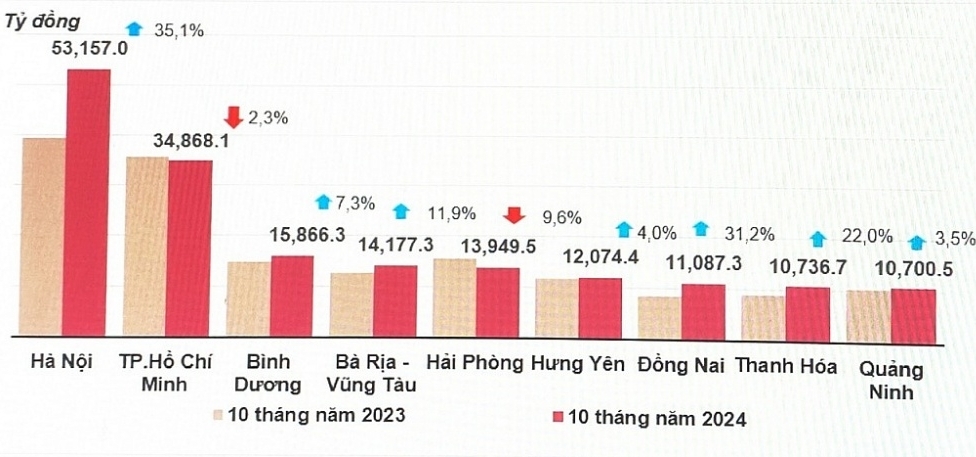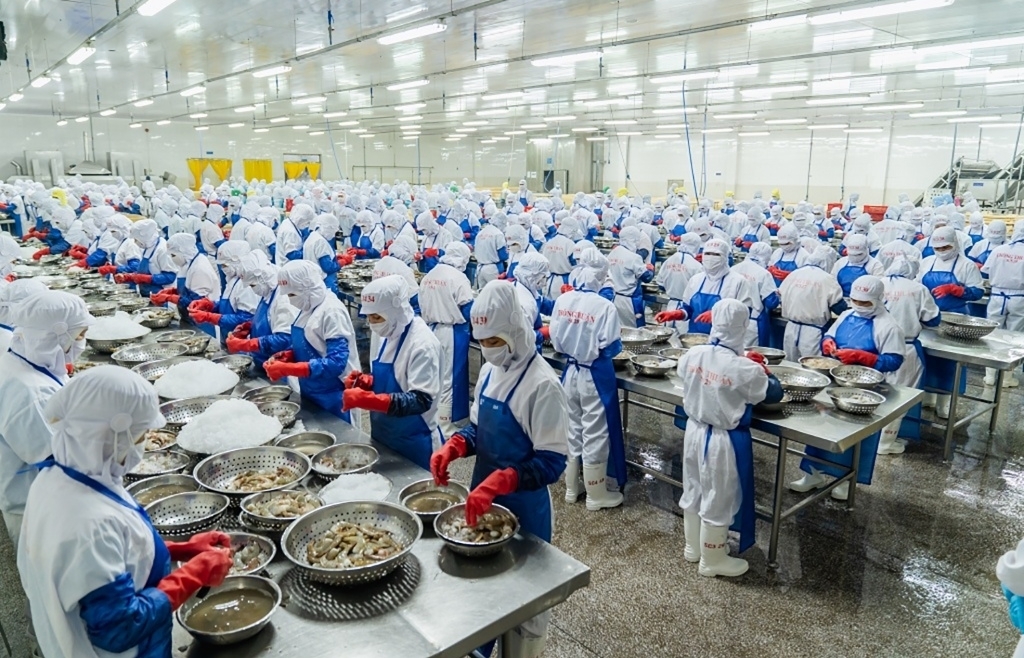General Secretary of the Banking Association Nguyen Quoc Hung: Bank profits need to be understood correctly, objectively and comprehensively
| Six priority strategies of banks amid COVID-19 pandemic | |
| ADB revises down growth outlook for Vietnam | |
| Processes in e-tax payment |
 |
| Mr. Nguyen Quoc Hung |
In the first six months of 2021, banks continue to achieve high profits, in your opinion, why is this?
In my opinion, the high profit of banks is a good thing, from there, banks will have more resources to support businesses and the economy. Banking is a special business, therefore, it is necessary to have special behaviors and views, not just looking at the profits of the bank. Therefore, the bank's profits need to be properly understood, objectively and comprehensively viewed from all angles.
Firstly, credit institutions themselves have strengthened and improved their management and financial capacity. For example, financial capacity is improved through increasing charter capital. Nearly all credit institutions have increased their charter capital to ensure capital adequacy ratio (CAR) according to Basel II international risk management standards. Many banks have not paid dividends to shareholders for many years to save capital resources for the future.
Second, credit institutions have pushed to reduce operating costs thanks to early investment in equipment, application of modern information technology and active reform of administrative procedures.
Third, unlike in the past, where the bank's revenue was mainly from loan interest, now, the rate of revenue from services at credit institutions has increased, with some banks collecting services contributing up to 40% of profit, which is in line with the international trend.
Fourth, the process of restructuring and dealing with bad debts at credit institutions is highly effective. Up to now, 21 credit institutions have bought back debts sold to Vietnam Asset Management Company (VAMC), provisioning activities have also been enhanced.
Fifth, credit institutions themselves have actively expanded service activities such as correspondent banking, insurance and many other activities to increase income from these activities.
Sixth, after more than a year of organizing the implementation of Circular No. 01/2020/TT-NHNN of the State Bank of Vietnam, stipulating that credit institutions and foreign bank branches restructure the repayment terms; exemption or reduction of interest and fees; maintaining the same debt group to support customers affected by the Covid-19 pandemic has helped credit institutions temporarily not have to make provision for risks, so it also reduces costs.
Seventh, bank profits are being temporarily calculated on top of customer's receivables according to current regulations of law. If the customer fails to pay the debt, the bank must withdraw, then it will not be recognized in profit anymore.
What do you think about many opinions that credit institutions are "sucking blood" from borrowers to get high profits or input interest rates have decreased but output interest rates have not decreased accordingly?
I emphasize once again, it is necessary to look at the bank's profits comprehensively and fully in all aspects. It is completely incorrect to say that bank profits increase due to the high interest rate difference.
In fact, the difference in input and output interest rates may be loose in 2021, but that gap is reasonable and consistent with reality, this difference has not taken into account operational costs and risk costs, not because banks take advantage of the decrease in input interest rates but increase or keep lending rates unchanged.
The increase in demand capital ratio, lower costs, and additional charter capital to ensure the CAR are conditions for the bank to reduce interest rates. But the reduction of interest must also have appropriate steps and roadmaps. Currently, the ratio of medium and long-term debt at banks is up to 40%. Because these loans had high interest rates in the past, when the interest rates are reduced, it is imperative to reduce them step by step to ensure that the ratio is sufficient to cover the costs of the credit institution.
Banks are the "lifeblood" of the economy. The “lifeline” of good financial health is the basis to support the business recovery and development. This is what credit institutions have been doing over the years. For example, the agreement of credit institutions to reduce interest rates in the context of the Covid-19 pandemic is estimated at tens of trillions of dong. If the health of the credit institution is not good, it will not have enough financial capacity to reduce interest rates.
Moreover, profits are being considered and used strictly by credit institutions. Banking is an industry that is willing to share profits to actively contribute to social security activities, showing a very high sense of responsibility to the community, with a large contribution to funds and anti-coronavirus activities.
How do you assess the impact of the Covid-19 pandemic on the banking industry in the near future?
It should also be added that banks are also very eager to use their profits to increase their charter capital to cope with future risks. Currently, the impact of the Covid-19 pandemic on the banking industry is very high. As far as I know, the amount of debt structured under Circular 01/2020 and Circular 03/2021 is currently VND347 trillion. But this number is likely to rise. Enterprises will not have money to repay bank loans, while banks must continue to make provision for risks according to Circular 03/2021 for a period of three years.
Thus, the bank's bad debt will certainly increase in the future. Not to mention that Resolution 42 will expire in August 2022, then how will the bad debts of credit institutions be handled? How will the bank's bad debt be assessed and recognized?
The banking industry has struggled to restructure, invest in technology, cut costs to support the economy and businesses, but here comes when bad debts arise and must ensure that the bad debt ratio is brought back in accordance with regulations, who will support the bank? These are the problems facing the banking industry.
Related News

Storm No. 3 destroys profits of many insurance companies
14:45 | 20/11/2024 Import-Export

Strengthening the financial “health” of state-owned enterprises
09:23 | 20/11/2024 Finance

A “picture” of bank profits in the first nine months of 2024
09:42 | 19/11/2024 Finance

Public investment spending up 1.8% in first 10 months of 2024
10:03 | 08/11/2024 Finance
Latest News

VN's food processing industry struggles to improve quality and value chain integration
15:53 | 22/11/2024 Import-Export

Approach strategy of the seafood industry when implementing UKVFTA
09:26 | 22/11/2024 Import-Export

Mid-November: Vietnam's trade volume matches 2023 total, eyes record-breaking growth
09:25 | 22/11/2024 Import-Export

Vietnamese enterprises facing challenges from cross-border e-commerce platforms
14:32 | 21/11/2024 Import-Export
More News

Vietnam, Malaysia eye new milestone in trade ties
14:29 | 21/11/2024 Import-Export
Shrimp exports surge in 10 months, generating 3.2 billion USD
14:27 | 21/11/2024 Import-Export

Vietnam’s exports to the U.S. near US$100 billion milestone
09:46 | 21/11/2024 Import-Export

From the “abnormal” coffee price, worries about the new crop
09:46 | 21/11/2024 Import-Export

What obstacles limit the market share of Vietnamese goods in the UK?
14:49 | 20/11/2024 Import-Export

Why seafood exports to some Middle Eastern Countries are stalled
14:47 | 20/11/2024 Import-Export

Vietnam, Malaysia eye golden partnership opportunities in Halal industry
14:44 | 20/11/2024 Import-Export

Tra fish sector aiming for production, processing greening for sustainable development
14:41 | 20/11/2024 Import-Export

Developing supporting industries for the billion-dollar export commodity groups
09:26 | 20/11/2024 Import-Export
Your care

VN's food processing industry struggles to improve quality and value chain integration
15:53 | 22/11/2024 Import-Export

Approach strategy of the seafood industry when implementing UKVFTA
09:26 | 22/11/2024 Import-Export

Mid-November: Vietnam's trade volume matches 2023 total, eyes record-breaking growth
09:25 | 22/11/2024 Import-Export

Vietnamese enterprises facing challenges from cross-border e-commerce platforms
14:32 | 21/11/2024 Import-Export

Vietnam, Malaysia eye new milestone in trade ties
14:29 | 21/11/2024 Import-Export





